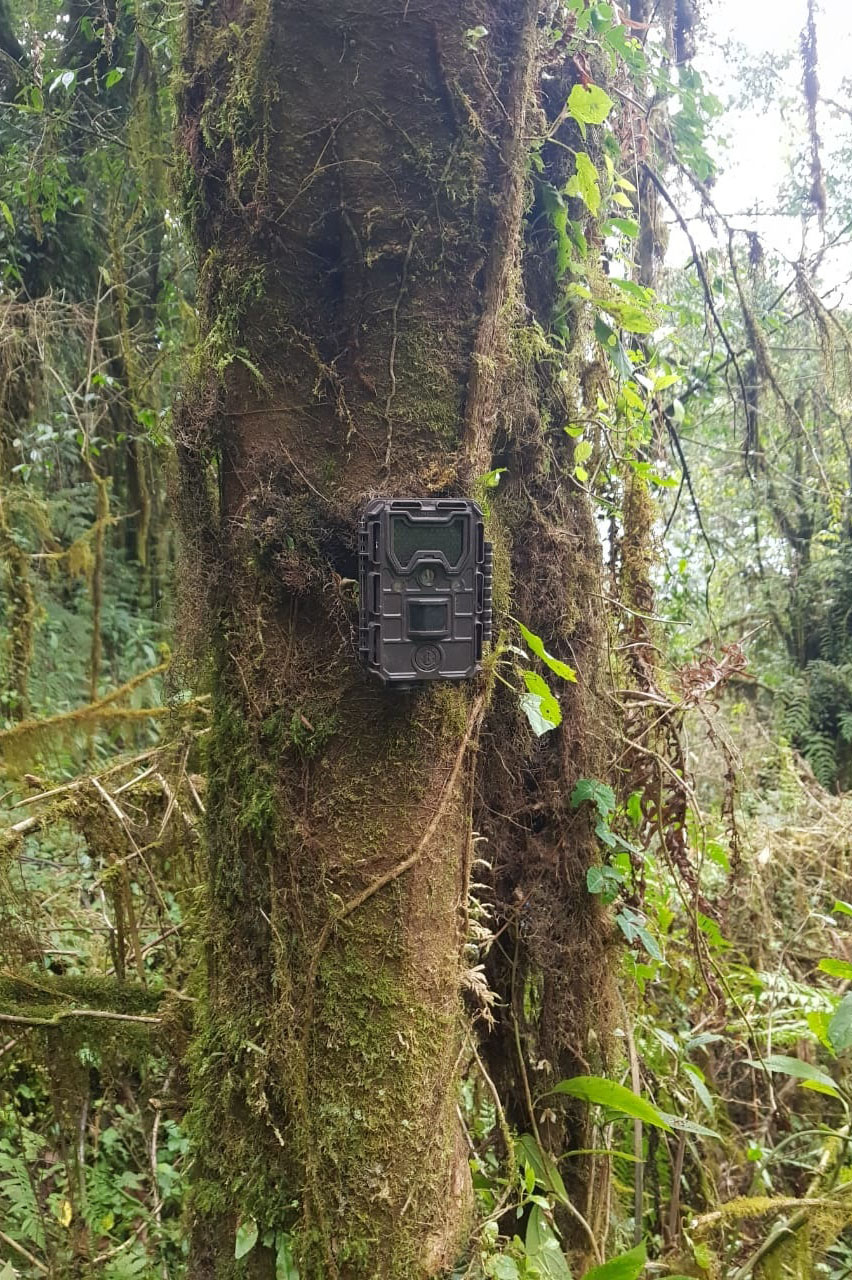Yadav Ghimirey works for Friends of Nature, a youth-led wildlife charity based in Nepal. PTES has been providing support for Yadav and his team as they help endangered dholes, or Asiatic wild dogs, return to their region. Wild dog numbers plummeted across their range, mostly due to persecution and habitat loss. But in recent years, they’ve been making a comeback. This is great news, but we don’t want the conflict between the dogs and local herders, which led to the persecution, to happen again.
Using camera traps
Yadav has been working hard to understand how many dogs there are, which areas they’ve come back to and then he and his team plan to establish an insurance scheme for the local herders whose livestock might need protection from predator attacks. In order to count the dogs, and discover which areas of the mountains they’re using, Yadav put up 25 camera traps. He set them up in places where people had reported seeing them, as well as other locations they’re likely to use.
Yadav reported, “It’s encouraging that the wild dogs are coming back.” But he wants to be sure how many there are. “People exaggerate the pack size so it’s not prudent to just believe their claims. One man said he saw twenty animals but up until 2018 we only had evidence of lone individuals so it’s not possible that such large packs are in the area.” Yadav estimates that there are normally three to five animals in a pack and he hopes the camera trap images will confirm this. The images may also help determine how many dogs there are in total in the region, and if, as he hopes, numbers have increased.
Stronger together
Generally wild dog packs indicate good prey availability but they also gather in packs to deter other predators. Asiatic wild dogs are very small but also what is known as hypercarnivorous – more than 70% of their diet is meat. Being in a pack enables them to kill larger prey than they’d be able to alone. And being in a pack helps them compete against larger predators such as leopards and clouded leopards. We hope that the anecdotes about packs are right, and that the packs are partly forming because there is now good prey availability.
The cameras have now been out for about three months and we’re waiting excitedly to hear the results. The Friends of Nature field assistants have collected the camera traps and the next step is taking the memory cards to Friends of Nature headquarters. Unfortunately, because the study area is so remote, transporting the memory cards involves long-distance travel on public transport and covid worries mean that such transport isn’t safe at the moment. So we’ll have to wait a little longer to find out what species the camera traps have documented, but we’ll share the updates with you as soon as we have them.
Yadav’s team have been busy setting up camera traps! See them in action below (photo credits: Friends of Nature):
Thank you for helping us fund this research to protect wild dogs in Nepal.
If you’d like to support this work, please donate or set up a direct debit here today.
Find out more about our work to protect Asiatic wild dogs in Nepal:

